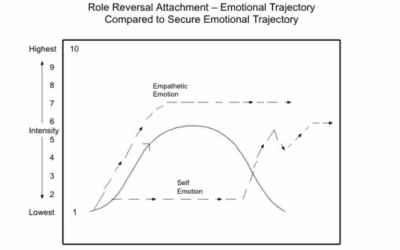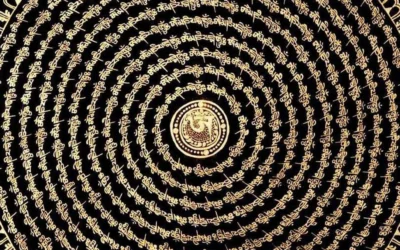How do you Get Rid of Trauma in the Mood and Body
Abstract:
This article presents a phenomenological approach to understanding trauma and its effects on cognition and emotional experience. It explores the roles of different brain regions, particularly the prefrontal cortex and the subcortical brain, in processing traumatic experiences. The text emphasizes the limitations of purely cognitive approaches to trauma treatment and introduces alternative therapies that target deeper brain structures and bodily experiences. By focusing on how trauma feels to the individual, rather than just its neurological mechanisms, the article aims to bridge the gap between scientific understanding and lived experience of trauma.
Key Ideas:
1. The prefrontal cortex is associated with personality, language-based thoughts, and ego.
2. The subcortical brain (or “body brain”) is responsible for instinctive reactions and can be programmed by environmental experiences.
3. Cognition typically flows from bodily sensations to emotions to conscious thoughts, rather than the reverse.
4. Trauma can disrupt normal brain functioning, creating “limbic feedback” that blurs the line between past and present experiences.
5. The ego often struggles to control trauma-induced emotional and physical responses.
6. Understanding why we feel certain emotions can be challenging due to the disconnect between our intellectual understanding and bodily experiences.
7. Purely cognitive therapies have limitations in treating trauma effectively.
8. Alternative therapies like EMDR, brainspotting, and somatic therapies target deeper brain structures and bodily experiences to address trauma.
9. The article emphasizes the importance of listening to the wisdom of emotional and bodily experiences, rather than relying solely on intellectual understanding.
10. Trauma treatment often requires approaches that go beyond traditional talk therapy to address the physiological aspects of traumatic experiences.
Article:
There are plenty of books and articles about how trauma works and how it effects the brain. Many of these books are written by doctors and scientists that explain how the pieces of the brain work together. The Body Keeps the Score by Bessel van der Kolk is an excellent one. So is When The Body Says No by Gabor Maté.
This books outline the technical effects of trauma on the brains and scientific terms for the parts of the brain and their function. In this article we are going to take a phenomenological look at how trauma feels to you, the person with the symptom, not as scientists. We are going to notice the way that trauma changes the way that you think and how you feel. We are going to try to make connections between being these parts of the brain and the way they operate in your cognition and feeling.
First up is the prefrontal cortex. This is the front of the brain just underneath your forehead. It is responsible for the personality and spark that makes you unique. If you were going to get an ice pick lobotomy back in the dark ages of psychology, this is the part of the brain that would be cut away. After ward you could eat sleep and breathe, but much of the thoughts and identity that make up your personality would be gone.
The prefrontal cortex is responsible for thoughts and specifically, language based thoughts. Your ability to think in words and articulate your experience are part of your cognition. Another word for this part of thinking is called the ego. Our ego is our sense of control and identity as we conceive of it right now. Our ego is rigid and resists change and transformation. It wants us to hang on to the things that are familiar and give us a strong sense of control.
The subcortical brain, or body brain is the part of the brain connected to the brainstem, It is the oldest part of the brain in evolutionary terms. It is the part that we share in common with reptiles because we retain it from when we were reptiles. A lizard does not need an ego. It is not beneath a lizard to eat a moth, nor does a lizard need to pontificate about its relationship to moths. A lizards brain needs only to move the body into action when a lizard sees a moth. The lizard must eat the moth or starve. If the lizard sees an owl, it must hide or be eaten.
Our subcortical brains are able to be programmed by our environment. When we have an experience with a certain person our subcortical brain might learn that we are safe around them and can relax. Our subcortical brain might also learn that this person is scary and we should keep our muscles tight and ready for aggression. Our thought driven prefrontal cortex might know that we do not need to fear a fight at work. Regardless, our subcortical brain still prepares our body for a fight.
Our cognition runs down from our prefrontal cortex through our midbrain cortex and finally into our subcortical brainstem. We do not think in this order though. Instead we feel through the body first, translate this felt sense into an emotional reality and then LASTLY we make language based thoughts and words. We may have a hard time understanding why we feel what we feel intellectually. We do not create emotion with our intellect. Our bodies and emotions are programmed by our epigenetics, early life experiences and traumatic and stress full events in life.
How many times have you said “I don’t know why I feel _____.” It is often hard to separate our selves from our conscious intellect and listen to the wisdom of the emotional and deep body experience. Trauma hijacks the programming of our subcortical brain, creating limbic feedback. We are not able to tell the present moment from traumatic events in the past or in childhood.
We have roiling physical and emotional reexperiencing that we cannot change despite our egos attempts to control cognition. These reactions are often threatening to our ego because they remind the ego that it is not all of what we are. The ego can fight for years powerlessly against our physical and emotional responses tirelessly and see no progress. ”
Cognitive only therapy, which seeks to give a individual ego management strategies is limited in the trauma that it is able to treat. Brain based medicine; like EMDR, neurofeedback and, brainspotting; treat trauma directly in the deep brain. Brainspotting therapy uses the way our optic nerve connects directly to the deep brain to treat trauma. Somatic therapy; like IFS, Yoga and Sensorimotor psychotherapy; uses the body to treat trauma.
There are plenty of books and articles about how trauma works and how it effects the brain. Many of these books are written by doctors and scientists that explain how the pieces of the brain work together. The Body Keeps the Score by Bessel van der Kolk is an excellent one. So is When The Body Says No by Gabor Maté.
This books outline the technical effects of trauma on the brains and scientific terms for the parts of the brain and their function.
In this article we are going to take a phenomenological look at how trauma feels to you, the person with the symptom, not as scientists. We are going to notice the way that trauma changes the way that you think and how you feel. We are going to try to make connections between being these parts of the brain and the way they operate in your cognition and feeling.
First up is the prefrontal cortex. This is the front of the brain just underneath your forehead. It is responsible for the personality and spark that makes you unique. If you were going to get an ice pick lobotomy back in the dark ages of psychology, this is the part of the brain that would be cut away. After ward you could eat sleep and breathe, but much of the thoughts and identity that make up your personality would be gone.
The prefrontal cortex is responsible for thoughts and specifically, language based thoughts. Your ability to think in words and articulate your experience are part of your cognition. Another word for this part of thinking is called the ego. Our ego is our sense of control and identity as we conceive of it right now. Our ego is rigid and resists change and transformation. It wants us to hang on to the things that are familiar and give us a strong sense of control.
The subcortical brain, or body brain is the part of the brain connected to the brainstem, It is the oldest part of the brain in evolutionary terms. It is the part that we share in common with reptiles because we retain it from when we were reptiles. A lizard does not need an ego. It is not beneath a lizard to eat a moth, nor does a lizard need to pontificate about its relationship to moths. A lizards brain needs only to move the body into action when a lizard sees a moth. The lizard must eat the moth or starve. If the lizard sees an owl, it must hide or be eaten.
Our subcortical brains are able to be programmed by our environment. When we have an experience with a certain person our subcortical brain might learn that we are safe around them and can relax. Our subcortical brain might also learn that this person is scary and we should keep our muscles tight and ready for aggression. Our thought driven prefrontal cortex might know that we do not need to fear a fight at work. Regardless, our subcortical brain still prepares our body for a fight.
Our cognition runs down from our prefrontal cortex through our midbrain cortex and finally into our subcortical brainstem. We do not think in this order though. Instead we feel through the body first, translate this felt sense into an emotional reality and then LASTLY we make language based thoughts and words. We may have a hard time understanding why we feel what we feel intellectually. We do not create emotion with our intellect. Our bodies and emotions are programmed by our epigenetics, early life experiences and traumatic and stress full events in life.
How many times have you said “I don’t know why I feel _____.” It is often hard to separate our selves from our conscious intellect and listen to the wisdom of the emotional and deep body experience. Trauma hijacks the programming of our subcortical brain, creating limbic feedback. We are not able to tell the present moment from traumatic events in the past or in childhood.
We have roiling physical and emotional reexperiencing that we cannot change despite our egos attempts to control cognition. These reactions are often threatening to our ego because they remind the ego that it is not all of what we are. The ego can fight for years powerlessly against our physical and emotional responses tirelessly and see no progress.
Cognitive only therapy, which seeks to give a individual ego management strategies is limited in the trauma that it is able to treat. Brain based medicine; like EMDR, neurofeedback and, brainspotting; treat trauma directly in the deep brain. Brainspotting therapy uses the way our optic nerve connects directly to the deep brain to treat trauma. Somatic therapy; like IFS, Yoga and Sensorimotor psychotherapy; uses the body to treat trauma.
Bibliography:
van der Kolk, Bessel A. The Body Keeps the Score: Brain, Mind, and Body in the Healing of Trauma. Penguin Books, 2014.
Maté, Gabor. When the Body Says No: Exploring the Stress-Disease Connection. Wiley, 2011.
Further Reading:
Levine, Peter A. Waking the Tiger: Healing Trauma. North Atlantic Books, 1997.
Ogden, Pat, and Janina Fisher. Sensorimotor Psychotherapy: Interventions for Trauma and Attachment. W.W. Norton & Company, 2015.
Shapiro, Francine. Eye Movement Desensitization and Reprocessing (EMDR) Therapy, Third Edition: Basic Principles, Protocols, and Procedures. Guilford Press, 2017.
Grand, David. Brainspotting: The Revolutionary New Therapy for Rapid and Effective Change. Sounds True, 2013.
Porges, Stephen W. The Polyvagal Theory: Neurophysiological Foundations of Emotions, Attachment, Communication, and Self-Regulation. W.W. Norton & Company, 2011.
Lanius, Ruth, et al. Healing the Traumatized Self: Consciousness, Neuroscience, Treatment. W.W. Norton & Company, 2015.
Damasio, Antonio. The Feeling of What Happens: Body and Emotion in the Making of Consciousness. Harcourt Brace, 1999.
Siegel, Daniel J. The Developing Mind: How Relationships and the Brain Interact to Shape Who We Are. Guilford Press, 2015.
Rothschild, Babette. The Body Remembers: The Psychophysiology of Trauma and Trauma Treatment. W.W. Norton & Company, 2000.
























0 Comments